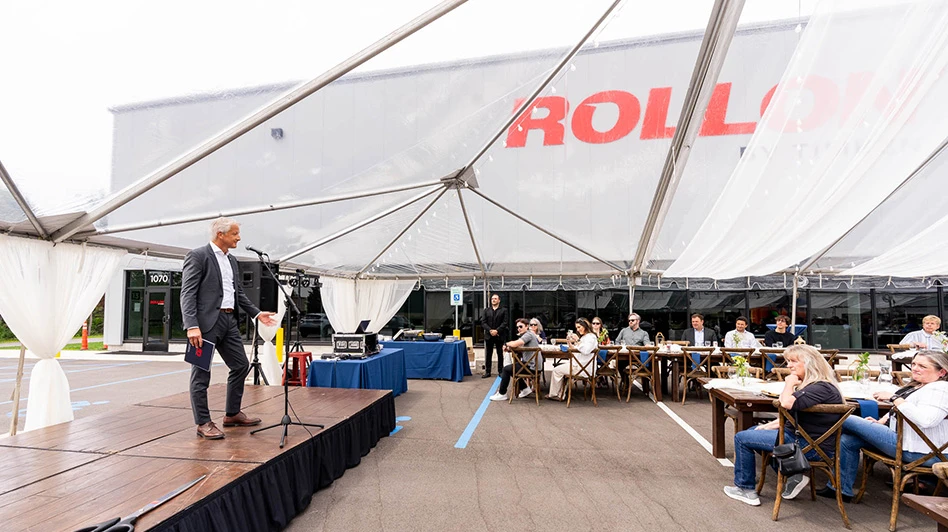
It’s been incredibly exciting to witness the innovation in the medical technology market during the past several years. Advancements in manufacturing processes have made devices smaller, more robust, and capable of delivering life-saving treatments and therapies to patients.
Despite the advancements, medical device manufacturers face several key challenges, especially in device measurement. As devices, such as syringes, have become increasingly smaller, accurately measuring them for manufacturing standardization is more difficult. Strict standards and regulations add an additional layer of complexity manufacturers must deal with. And, tighter production timelines have put more strain on manufacturers, who must balance those demands with a need for measurement accuracy.
Despite these challenges, form measuring and other measurement systems can play a vital role in helping medical device manufacturers overcome each of them.
Challenge #1: Smaller part size
Smaller medical devices have revolutionized healthcare, allowing providers to deliver novel therapies, treat illnesses in new ways, or diagnose issues more effectively. However, smaller parts present a challenge for manufacturers needing to accurately measure them for production. Specifically, needles, catheters, and ball bearings for X-ray beds can be particularly difficult to measure.
This challenge can be further compounded since these parts are often more fragile because of their small size or the materials of which they’re made. Semiconductors or microscopic syringes, for example, can be scratched or damaged by most normal fixtures and measurement systems. For medical parts and equipment, true, accurate measurement is non-negotiable.
How do manufacturers solve these challenges when standard equipment just won’t do? The answer: customized measurement equipment and fixtures. Custom probes, styli, and fixtures can help ensure small parts can be accurately measured without damage. Styli can be customized for surface finish, tip height, or length, and probes can be customized as well. For probes, whether rotary or crank, retrofit kits can add a surface roughness detector or contour detector. Additionally, a roundness tester can be customized with a surface roughness detector, creating a machine performing two key measuring disciplines.
Fixtures can also be innovatively customized to meet various needs. For particularly sensitive or delicate parts, such as semiconductors, fixtures can use air suction to hold a part for measurement.
Regardless of how small or delicate a part is, measurement systems and equipment can be customized to meet medical manufacturers’ needs.

Challenge #2: Strict standards
Manufacturing measurement accuracy and repeatability are important for every industry but not surprisingly, medical manufacturers must be even more accurate than almost any other sector. As such, they must adhere to strict ISO standards and comply with regulations around data collection, analysis, security, and privacy. This benefits patients but can pose a challenge for manufacturers. Software, for example, must be tested to make sure any algorithms or calculation methods don’t violate standards or regulations.
Measurement systems can help manufacturers meet these needs in several ways. First, they can directly incorporate standards – ISO or others – into the measurement software. This ensures the specifications for attributes such as roundness, surface finish, or contour shape meet the robust standards. It can also give peace of mind to operators by making sure they’re precise, accurate, and in compliance.
Additionally, measurement providers can integrate data privacy and security features into machines and software, allowing secure measurement data collection without risking it being stolen or compromised by bad actors. However, it’s important to note that when software is updated, or new versions are released, manufacturers must re-verify and re-validate that data collection and privacy standards are still being met. Otherwise, they run the risk of failing an audit and being subjected to costly penalties.
Challenge #3: Rapid production timelines
Medical device manufacturers face a unique challenge being charged with making highly sensitive, complex, and precise equipment while still producing it rapidly and in large quantities.
This can pose a dilemma for measurement. To ensure accuracy, quality inspectors need enough time to adequately measure all the relevant attributes and collect that data. Most systems for medical devices and parts use contact measurement, where the probe must make physical contact with the part’s surface to collect measurement data. This isn’t a quick process, and depending on the part or piece of equipment, fixturing it to the measurement system can take a significant amount of time to ensure it doesn’t get damaged.
However, manufacturers don’t want measurement to take so long that it delays production, so as production timelines get shorter, measurement becomes even more challenging.
Automation programs for measurement systems can help solve this challenge by ensuring quicker measurement cycles – speeding up production timelines – in different ways. To begin, automation can quicken measurement by removing the human element from the process.
Additionally, automating the measurement process can allow manufacturers to fixture multiple parts at once. Rather than measuring each part one at a time, multiple parts can be measured at once, dramatically shortening the process.
While automation is still relatively new in the measurement industry, it holds the potential to transform and improve many elements of the process.

An exciting future
Medical device and part measurement plays a vital role in manufacturing. It helps ensure the machines and treatments medical and healthcare professionals use are safe, reliable, and effective. While manufacturers can run into challenges, measurement systems and software can be a key partner in overcoming them.
Automation can speed up measurement processes without sacrificing quality or accuracy. The evolution of camera technology and optical sensors could potentially reduce the need for contact measurement, especially helpful for extremely small or delicate parts. Artificial intelligence (AI) and laser sensing can further improve accuracy and remove human error .
Medical device manufacturers will always face challenges related to strict standards, production timelines, and part size. But with the right form measuring equipment, measurement systems, and partner, manufacturers can minimize the impact of these challenges. As the industry continues to evolve and adopt exciting new technologies, medical device manufacturers will have opportunities to focus on innovation and patient outcomes.
Mitutoyo America Corp.
https://www.mitutoyo.com

Explore the August 2023 Issue
Check out more from this issue and find your next story to read.
Latest from Today's Medical Developments
- Discover the future of manufacturing at GROB's 5-AXIS LIVE!
- Revolutionizing quality control with Hexagon's Autonomous Metrology Suite
- Autocam Medical's $70 million expansion to boost orthopedic job creation
- Platinum Tooling unveils new product catalog
- Meet the minds shaping CNC grinding at The Precision Summit
- Mitutoyo unveils innovative SurfaceMeasure-S Series sensors
- #69 Manufacturing Matters - Shopfloor Connectivity Roundtable with Renishaw and SMW Autoblok
- Veeva's impact on compliance and efficiency in medtech





